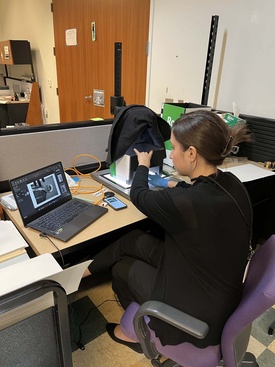My grandmother grew up in Hiroshima. She was 11 years old on August 6, 1945. Many lives were lost along with countless stories. Her family lost photos, records, and possessions. Thinking of my grandmother reminds me of the importance of preserving history. This is one reason I was excited to serve as an intern at the Japanese American National Museum this summer. I worked with the Tanaka Photo Studio Collection, which will help preserve Japanese American history for future generations.
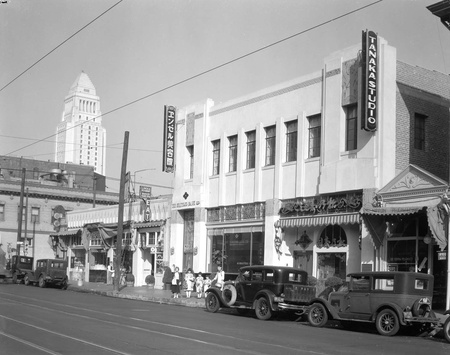
The Tanaka Photo Studio Collection consists of over 1,000 photographs taken by Issei photographer Chikashi Tanaka (1888 - 1977). Tanaka owned and operated a photo studio on 1st Street in Little Tokyo. His images captured the vibrant community that thrived in Los Angeles in the pre-war era. This is evidence that Japanese Americans had worked hard to create a unique space for themselves. They led successful and fulfilling lives.
Tanaka photographed families, weddings, funerals, cultural events, and businesses. He documented the blend of traditions, language, and religion unique to a community deeply rooted in Southern California. This was their home—as much as it was for their non-Japanese neighbors. These images reveal the devastating loss and injustice that resulted from the mass removal and incarceration during WWII.

Working with these photos reminded me of the limitations in the curriculum surrounding Japanese-American history. I was a junior in high school when we covered World War II and the Japanese incarceration. I looked forward to discussing these topics since I had a personal understanding of the history. I grew up in Los Angeles, visited JANM many times, and learned about the Japanese American experience firsthand.
However, the actual coverage was far from what I expected. We were taught little more than bookends. The “internment” (as it was called) started on February 19, 1942, with Executive Order 9066 and ended with the signing of the Civil Liberties Act on May 10, 1988, with a few details added in between.
As I connected with other Nikkei students in college, it became clear that my experience was not unique. The U.S. government overstepped the rights of American citizens based on nothing but racial bias, yet the coverage was frustratingly insufficient. I think what I missed most were the personal stories and perspectives that bring history alive. The history we were taught did not give students a sense of the rich and long heritage of Japanese Americans on the West Coast or what their lives were like leading up to incarceration.
The Tanaka Photo Studio Collection helps fill that need. These photos emphasize the humanity of Japanese Americans, offering a comprehensive picture of what day-to-day life was like during this time. This is vital to understanding both incarceration and the redress movement.
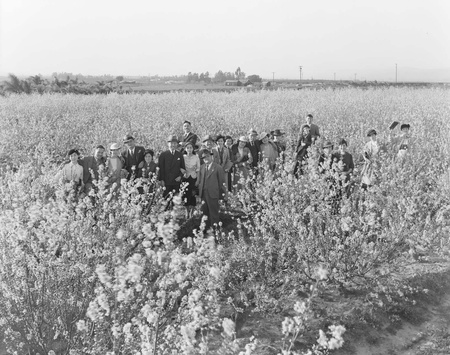
This made me all the more passionate about sharing Tanaka’s photographs. At JANM, significant effort had already been devoted to the collection, but it wasn’t yet accessible online. I had visited JANM for many years, enjoying the exhibits and using their resources for research. But I had no idea how much work was required to make these resources available to the public. I was surprised by the number of steps needed to make a donation, such as the Tanaka Photo Studio Collection, widely accessible.
The first step was archival. Every photograph was labeled by hand with a unique number so anyone, now and in the future, could find each item. I also collected all available information, which was usually written on the glassine envelope that the negative was initially housed in. This information usually included the name of the client and the date the photograph was taken.
Once the collection was organized, I digitized each negative using a light box and a Sony Camera to create a positive image. These digital images were labeled with the archival number and then cropped and edited. Lastly, I wrote a visual description for every photograph to aid future keyword searching.
The information, descriptions and files were uploaded to our collections management database and published on JANM’s website. The images are now available online.
I carefully went through these steps for each negative. Initially, my goal was to digitize as many photographs as possible. However, I was deeply moved by these images and wanted to curate an online exhibition to highlight Chikashi Tanaka’s life story, the historical context of this time, along with selected works that document the personal lives within the community.
I combed through the photos and identified recurring themes and subjects and chose four categories: Family, Work, Traditions, and Events. Each category includes 10 photographs and captions. These captions identify client names, dates, and specific locations, many of which still exist today. They also provide an opportunity to explain cultural events such as Hinamatsuri (Girl’s Day), which might be unfamiliar to some viewers.
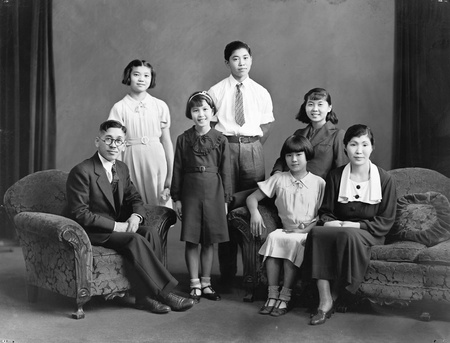
Such an extensive collection offers an invaluable opportunity to connect with descendants. I created two resources to help crowdsource information to identify those pictured in this collection. First, a client directory allows people to quickly search for the names of friends and family who lived in Southern California during this time. Next, an online form invites them to share the stories behind the photographs. This can even connect people with photographs of family members they may have lost over the years, especially due to incarceration.
Even before the online exhibition was published, we received multiple responses from people who found the Tanaka Collection through JANM’s Instagram posts. They recognized family members in the photos. This is a promising start to our crowdsourcing goal.
I’m excited to announce that this exhibition has recently become available online and you can access it right now. Follow this link to learn more and explore Chikashi Tanaka’s historical and personal photos. If you recognize anyone, use the online form to tell us more!
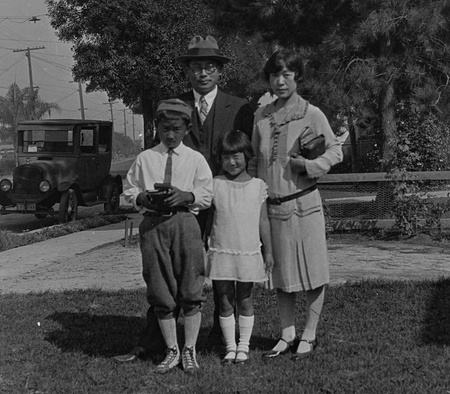
I’m grateful to JANM for offering me this wonderful experience and to the Getty Foundation and the Getty-Marrow Undergraduate Internship Program for sponsoring my summer internship. Most of all, on behalf of the Japanese American National Museum, I am deeply grateful to the Tanaka Family for entrusting the museum as the repository for this significant collection.
* * * * *
*View the online exhibition Tanaka Photo Studio: Family, Tradition, Business, and Community Before World War II at janm.org/tanaka-studio
© 2023 Nara Duffie


